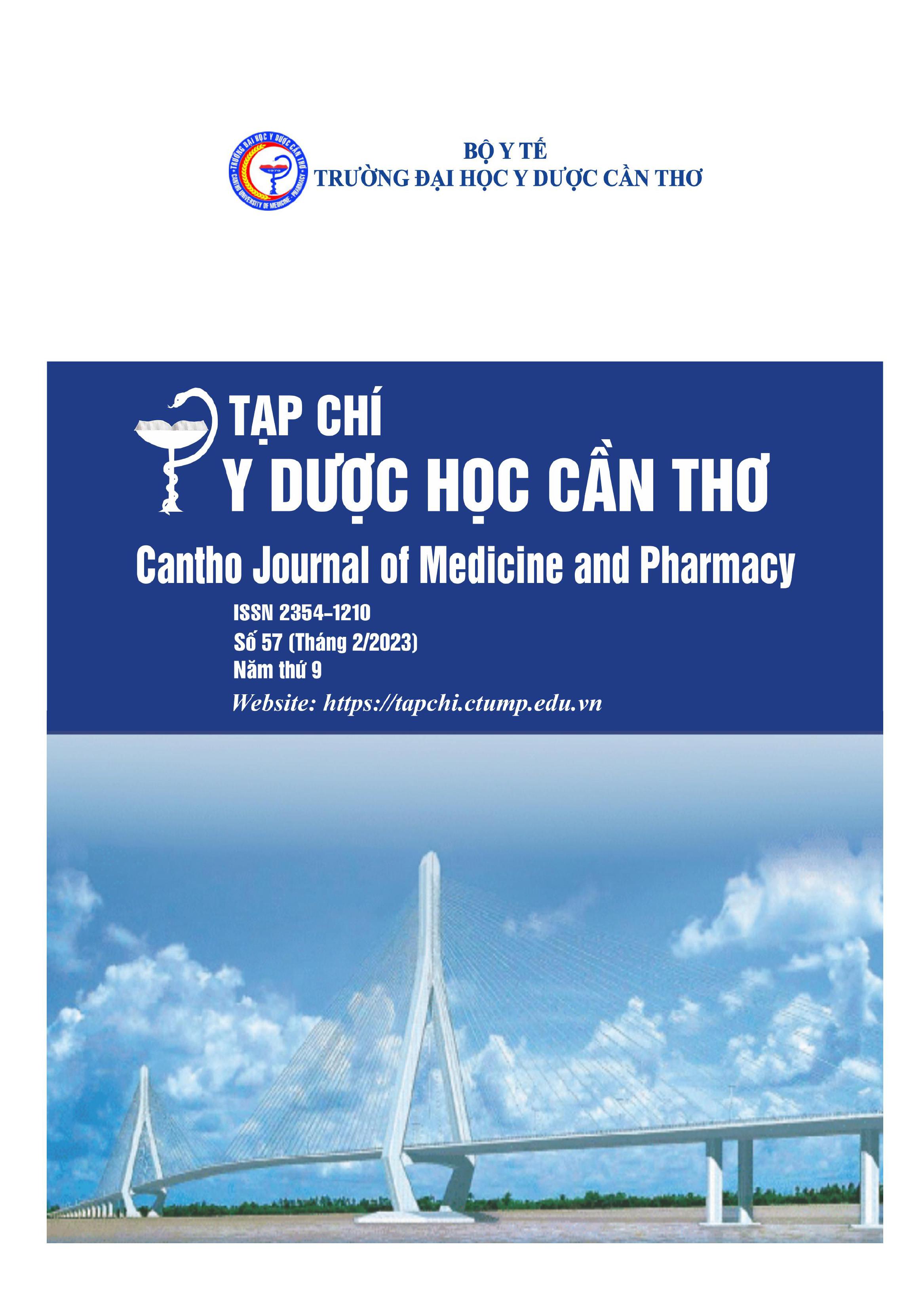EVALUATION THE SYMPTOMS OF TEMPOROMANDIBULAR DISORDERS AND PSYCHOLOGICAL FACTORS INFLUENCING HABITS ON DENTAL STUDENTS AT CAN THO UNIVERSITY OF MEDICINE AND PHARMACY
Main Article Content
Abstract
Background: Temporomandibular joint issues affect 40-60% of the global population. Temporomandibular joint problems, on the other hand, afflict 15 to 20% of adult patients. Women are more likely than males to suffer from temporomandibular joint diseases. Diseases of the temporomandibular joint also produce a slew of problems in daily life, impacting both appearance and pronunciation. Objectives: To determine the prevalence of temporomandibular disorders disease in college students and psychological factors and habits associated with temporomandibular disorders. Materials and Methods: A cross-sectional descriptive study of 118 dental students at Can Tho University of Medicine and Pharmacy. The condition of the temporomandibular joint is determined by clinical examination. Factors influencing temporomandibular joint disorders were identified through interviews using off-the-shelf surveys. Data were analyzed using SPSS 20's frequency test, chi-square test, and Fisher's exact test. Results: The temporomandibular disorders rate was 92.4%. The right mandibular restriction position and gender were statistically significant (p = 0.032). Deviations > 2 mm are associated with depression and anxiety. Deviations >2 mm and muscle pain on palpation were associated with pen biting habits (p = 0.019), (p = 0.026). Joint sounds were correlated with angle’s classification (p=0.008). Conclusions: Research shows that the rate of temporomandibular disorder among students of Odonto-Stomatology was high. There was no statistical significance between temporomandibular joint disorders and psychological factorshabituation.
Article Details
Keywords
Temporomandibular disorders, Temporomandibular disorders signs, depression, anxiety
References
2. Đỗ Minh Hương, Lê Thị Thu Hằng và Bùi Thị Hương Giang (2012), Khớp cắn và tình trạng khớp thái dương hàm của sinh viên Y Khoa Trường Đại học Y Dược Thái Nguyên, Tạp chí Khoa Học & Công Nghệ, 112(12), tr. 223 - 227.
3. Lê Kim Ngọc (2015). Nghiên cứu tình trạng rối loạn khớp thái dương hàm trên bệnh nhân đến khám tại Bệnh viện Trường Đại học Y Dược Cần thơ. Luận văn tốt nghiệp Bác sĩ Răng Hàm Mặt, Trường Đại học Y Dược Cần Thơ.
4. Akhter R., Murray A., Hassan N., and Wickham J. (2019), Temporomandibular Disorder Symptoms and their Association with Anxiety and Depression Among University Students, Advances in Dentistry & Oral Health, 10(3), tr. 1-5.
5. Ferneini E. M. (2021). Temporomandibular Joint Disorders (TMD), J Oral Maxillofac Surg, 79(10), pp. 2171-2172.
6. Helkimo M. (1974). Studies on function and dysfunction of the masticatory system. II. Index for anamnestic and clinical dysfunction and occlusal state, Sven Tandlak Tidskr, 67(2), 101-121.
7. Lomas J., Gurgenci T., Jackson C., and Campbell D. (2018), Temporomandibular dysfunction, Aust J Gen Pract, 47(4), pp. 212-215.
8. Marpaung C., Lobbezoo F., and van Selms M. K. A. (2018). Temporomandibular Disorders among Dutch Adolescents: Prevalence and Biological, Psychological, and Social Risk Indicators, Pain Res Manag, 2018, 5053709.
9. Namvar M. A., Afkari B. F., Moslemkhani C., Mansoori K., and Dadashi M. (2021), The Relationship between Depression and Anxiety with Temporomandibular Disorder Symptoms in Dental Students, Maedica (Bucur), 16(4), pp. 590-594.
10. Okeson J. P. (2019), Management of temporomandibular disorders and occlusion-E-book: Elsevier Health Sciences.
11. Okeson J. P. (1989), Temporomandibular disorders in children, Pediatr Dent, 11(4), 325-329.
12. Poveda Roda R., Bagan J. V., Díaz Fernández J. M., Hernández Bazán S., and Jiménez Soriano Y. (2007), Review of temporomandibular joint pathology. Part I: classification, epidemiology and risk factors, Med Oral Patol Oral Cir Bucal, 12(4), E292-298.
13. Srivastava, K. C., Shrivastava, D., Khan, Z. A., Nagarajappa, A. K., Mousa, M. A., Hamza, M. O., Al-Johani, K., and Alam, M. K. (2021), Evaluation of temporomandibular disorders among dental students of Saudi Arabia using Diagnostic Criteria for Temporomandibular Disorders (DC/TMD): a cross-sectional study, BMC Oral Health, 21(1), pp. 211.
14. Wu J., Huang Z., Chen Y., Chen Y., Pan Z., and Gu Y. (2021), Temporomandibular disorders among medical students in China: prevalence, biological and psychological risk factors, BMC Oral Health, 21(1), pp. 549.
15. Yalçın Yeler D., Yılmaz N., Koraltan M., and Aydın E. (2017), A survey on the potential relationships between TMD, possible sleep bruxism, unilateral chewing, and occlusal factors in Turkish university students, Cranio, 35(5), pp. 308-314.


